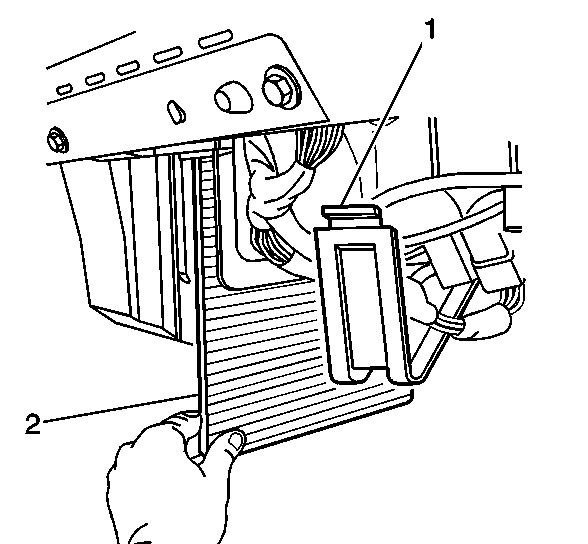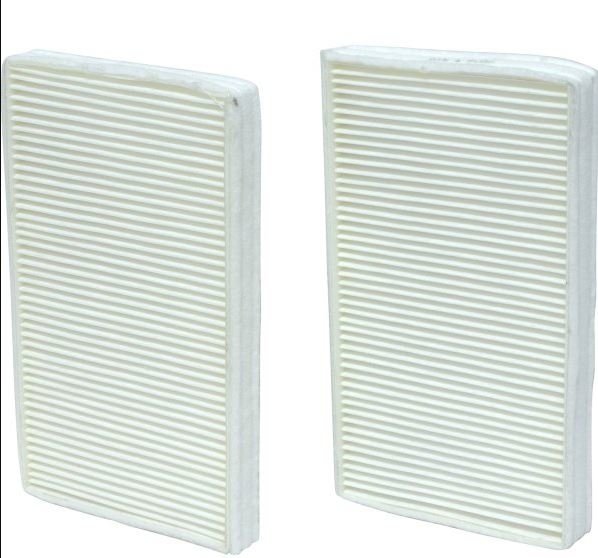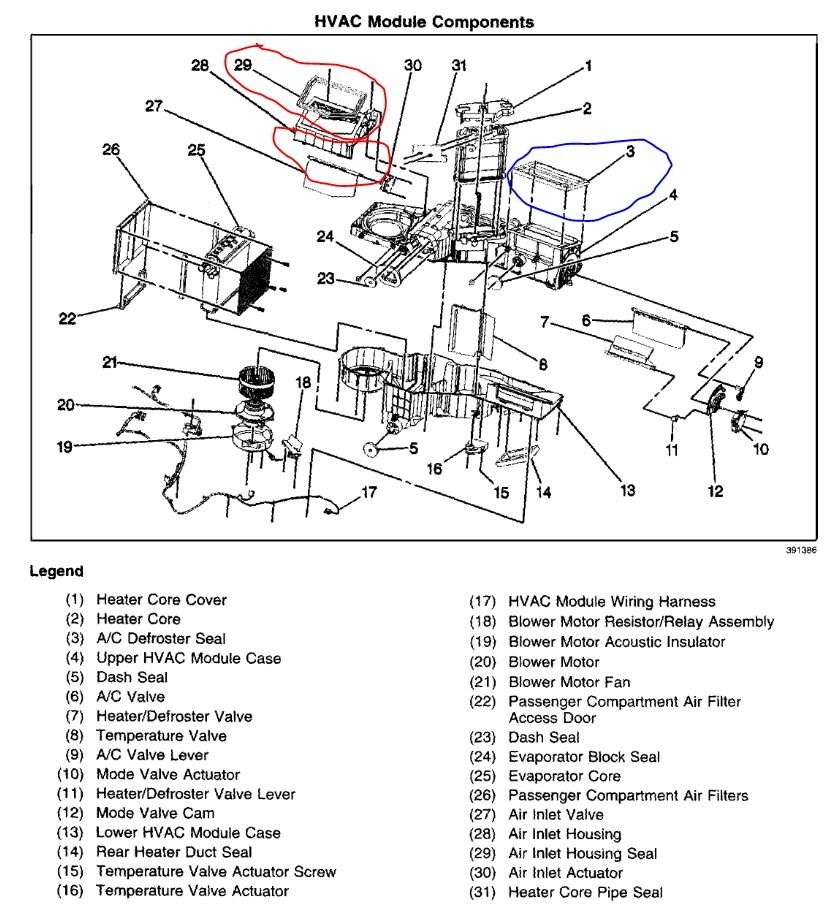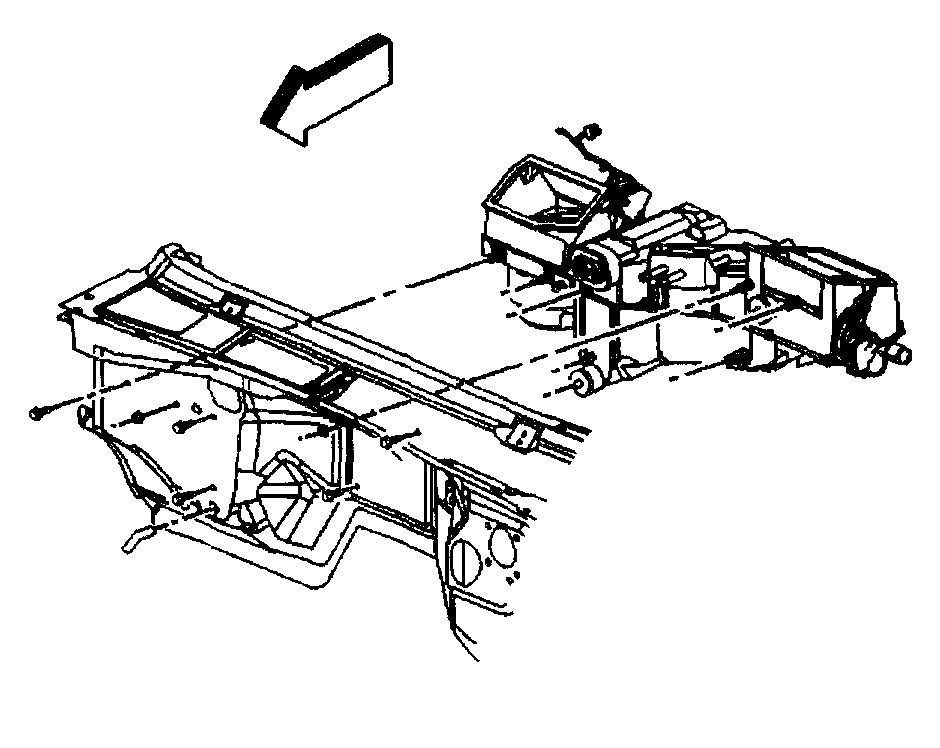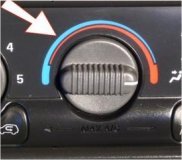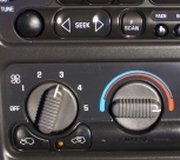It is the same type of seal but that was on the earlier design of trucks before the 2002 redesign. However it's possible you could gain access there.
Bulletin No: 01-01-37-008
Passenger Side of Vehicle Colder/Warmer Than Driver's Side
(Repair HVAC Case to Cowl Seal)
Models
1999-2001 Chevrolet and GMC C/K Pickup (Silverado, Sierra) and Utility (Suburban, Tahoe, Yukon, Yukon XL) Models
2002 Cadillac Escalade
Condition
Some customers may comment that the passenger side of the vehicle may be
1. Colder than the driver's side when the heat mode is on.
2. Warmer than the driver's side when the air conditioning (A/C) mode is on.
3. There may be dampness on the vehicle dash assembly when the A/C mode is on.
Cause
Condition may be due to poor sealing of the HVAC air inlet case to the front of dash or the recirculation mode door actuator may not hold the recirculation door closed while driving.
Correction
Replace the recirculation door actuator (if necessary) and repair the HVAC case to cowl seal using the following procedures
1. Place the A/C control in the manual heat mode.
2. Remove the fixed mast radio antenna.
3. Open the hood and install fender covers.
4. Remove both wiper arm assemblies using the following procedure
4.1. Disconnect the washer solvent hose from the air inlet grille panel nozzle.
4.2. Remove the cover from the wiper arm retainer. Remove the retainer. Rock the wiper arm back and forth in order to loosen the arm from the drive shaft. Remove the wiper arm.
5. Lower the hood.
6. Remove the air inlet grille panel using the following procedure
6.1. On each end of the air inlet grille panel is a rubber flap for the hood hinge cutout. Lift this flap and remove the air inlet grille panel attaching screw.
6.2. Remove the air inlet grille panel center top push pin.
6.3. Remove the clips that position the forward edge of the grille panel to the top of the cowl.
6.4. Disconnect the windshield washer supply hose from the bottom of the grille panel.
6.5. Remove the air inlet grille panel by sliding the panel rearward up the windshield and out.
This is the part that is likely different. I'm not sure if they used the same cowl stamping on your 2002 as they did on the earlier trucks. However it's not that difficult to remove the cowl cover as above and look to see if it might work. The thing is that normally a TSB that applies to later vehicles will carry over and this one doesn't it stops at the 2001 trucks.
7. Just to the left of the right hood hinge, on the horizontal surface of the cowl, locate a cover that is sealed in place. The cover has TRW stamped into it.
8. With a sharp knife, cut out the panel following the panel impression in the sealer tape.
9. Place a lifting device between the cover and the dash. Lift the cover enough to allow another tool to depress and release the front retaining tabs by pushing rearward on them. Remove the cover.
10. Look through the opening where you just removed the cover. You will see what looks like a piece of foam about 76 x 127 mm (3 x 5 in). This is the A/C recirculation door that is within the HVAC module.
11. Reach into the opening and carefully pull on the air inlet recirculation door. If the recirculation door moves with very little effort, replace the air inlet (recirculation) door actuator (Manual systems only). For systems with the Automatic Temperature control, initialize the system using published Service procedures.
12. Between the top of the HVAC air inlet module (appears as a 6 mm (1/4 inch) black strip) and the cowl sheet metal is a foam seal. This foam seal may be improperly positioned or damaged in some way (insufficient crush/sealing). This may allow outside ambient air to enter the passenger compartment incorrectly (under driving conditions). This can be corrected using the following procedure
Important
It is imperative that a good seal be achieved over the entire surface areas (no voids or skips), especially around the rear and sides of the HVAC case to cowl areas.
12.1. Seal the area between the cowl and HVAC case with RTV Silicone Rubber Sealant, P/N 12345739.
12.2. Using your finger, from the engine side of the cowl, ensure that the foam is stuck nicely to the HVAC module and does not have any distortions.
12.3. From the engine side of the cowl, working through the opening in the horizontal surface of the cowl, place a shop cloth into the opening and cover the blower fan. This keeps silicone from dripping onto the motor and causing an imbalance condition.
12.4. From the engine side of the cowl, working through the opening in the horizontal surface of the cowl, apply the RTV silicone to bridge the gap and cover the foam between the cowl sheet metal and the HVAC module case. Inspect your work with a light and a mirror. Ensure that no gaps or skips are present in the RTV seal.
12.5. Inspect your work for potential drips, runs, etc. If no problem is seen, remove the shop cloth covering the blower motor.
13. Apply a 3 mm (1/8 in) bead of weather-strip adhesive, P/N 12345097 around the opening in the horizontal surface of the cowl, where the cover fits into the cowl.
14. Place the cover on the workbench, top on the surface, and apply a 3 mm (1/8 in) bead of weather-strip adhesive on the edge of the cover.
15. Place the cover into the cowl opening and snap into place.
16. Apply another bead of weather-strip adhesive around the joint between the cover and the top of the cowl. Smooth this bead into a smooth surface with a finger or tool of some kind.
17. Place the leaf screen to the cowl. Attach the washer supply hose to the bottom of the air inlet grille panel. Do not place the fasteners in at this time.
18. Install the radio fixed mast antenna. Tighten 1/4 turn after contact is made with the base.
19. Lower but do not close the hood.
20. Center the opening in the air inlet grille panel around the antenna mast and then install the air inlet grille panel retaining screws.
Tighten the screws to 2 Nm (18 lb in).
21. Raise the hood.
22. Reinstall the air inlet grille panel center retainer and front edge retaining clips.
23. Cycle the wipers to ensure the wiper system is in the parked position.
Important-
Inspect the windshield lower edge on each side. About 51-76 mm (2-3 in) from the bottom, you will find a 13 mm (1/2 in) long black mark embedded in the glass. The black line is the position for the wiper blade to be in when the wiper system is in the parked position.
24. Install the wiper arm assemblies. Position the wiper blades just below the black marks in the windshield.
25. Install the retaining nuts.
Tighten the retainers to 25 Nm (18 lb ft).
26. Reconnect the washer hoses.
27. Remove the fender covers.
28. Close the hood.
SPONSORED LINKS
Wednesday, March 31st, 2021 AT 5:38 PM
